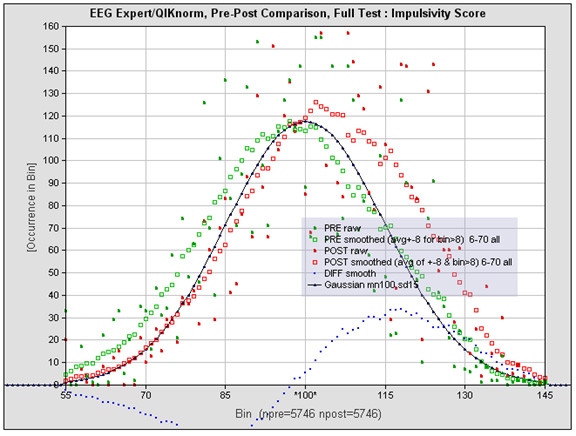A major divide within the field of neurofeedback is the basic question of whether we are aiming to improve function or to expunge dysfunction. This distinction was highlighted crisply many years ago when one of the early researchers, Barry Sterman, said that if he could not identify a deficit in the EEG he would be ethically compelled to send the client home. There would be nothing for him to do. ...
On the other side of the debate we have the sharply drawn argument
that even if a deficit is being targeted, the brain solves the problem
by means of the enhancement of function. It is function that banishes
dysfunction, and indeed matters could not be otherwise. We don’t do
brain repair. The only answer to bad brain behavior is good brain
behavior. So why not target the enhancement of function in the first
place? One can think of this in terms of the standard reward/punishment
dichotomy. Think about the training of Shamu. The training is based
entirely on the encouragement of the desired behavior. The worst that
can happen is the withholding of a reward. So it is with training the
brain.
We now know that brain function can always be improved. Additionally, we are able to train functions that have no obvious headroom limit: memory, intelligence, fine motor control. Folks do not have to qualify by deficit. This also simplifies the approach. Just as Leo Tolstoy’s unhappy families are each unhappy in their own way, brain dysfunction particularizes in each individual, reflecting both genetics and life history. Function, on the other hand, is organized nearly the same way in all of us. It’s like Leo Tolstoy’s happy families. Fairly standard training protocols take us a long way toward enhancing functional capacity.
We gain benefits in terms of research also. There is no placebo model for extraordinary performance beyond the norm. We do not have to argue about “regression to the mean.” Every individual serves as his own control in the training. We are training with reference to the pre-training baseline in each case.
http://www.eeginfo.com/research/infra-low-frequency-neurofeedback-for-optimum-performance.jsp
Siegfried Othmer, PhD
drothmer.com
----------------------------------------------
Comments from eeginfo.com
March 14, 2016 at 6:33 pm
An absolute joy to read this article. It has addressed some of the criticisms of non linear understanding of function. There is a most disturbing read of this graph, in that, the normative distribution is very closely related to pre training dysfunction presentations. Is this then a valid argument to say that normal is sick? Is the normal population so stressed that they are dysfunctional?
ReplyMarch 14, 2016 at 8:58 pm
Your concerns are valid. Our reference population is representative of those who walk the earth in many countries. There is indeed a broad distribution of function, and if any of those folks walked into a mental health practice and tested below some established threshold, they would likely be labelled dysfunctional via one or another of the accepted labels. With respect to attentional variables such as impulsivity, the dysfunctional are simply the tail of the “normal” distribution. There is no discrete category; there is no obvious criterion that discriminates the dysfunctional from the functional. The implied concreteness of diagnoses such as ADHD is therefore a convenient fiction. Matters are improved by ascertaining that the person at issue is in the tail of the distribution along several dimensions of behavior, not just one.
We are using population-based norms, but these reflect what is, not what ought to be. So the distribution is not normative in the traditional sense.



Write first comment